In this paper, we study the inverse problem of identifying the initial value of a two-dimensional degenerate parabolic equation, which often appears in the fields of engineering, physics, and computer image processing. Firstly, the difference scheme of forward problem is established by using the finite volume method. Then stability and convergence of the difference equations are proved rigorously. Finally, the Landweber iteration and conjugate gradient method are used to solve the inverse problem, and some typical numerical examples are shown to verify the validity of our iterative algorithm. Numerical results show that the algorithm is stable and efficient.
1.
Introduction and definitions
The function class H(E) is a collection of the function f which are holomorphic in the open unit disc
Let Ap denote the class of all functions f which are analytic and p-valent in the open unit disk E and has the Taylor series expansion of the form
For briefly, we write as:
Moreover, S represents the subclass of A which is univalent in open unit disk E. Further in area of Geometric Function Theory, numerous researchers offered their studies for the class of analytic function and its subclasses as well. The role of geometric properties is remarkable in the study of analytic functions, for instance convexity, starlikeness, close-to-convexity. A function f∈Ap is known as p-valently starlike (S∗p) and convex (Kp), whenever it satisfies the inequality
and
Moreover, a function f(z)∈Ap, is said to be p-valently starlike function of order α, written as f(z)∈S∗p(α), if and only if
Similarly, a function f(z)∈Ap, is said to be p-valently convex functions of order α, written as f(z)∈ Kp(α), if and only if
for some 0≤α<p. In particular, we have
and
The convolution (Hadamard product) of f(z) and g(z) is defined as:
where
Let P denote the well-known Carathéodory class of functions m, analytic in the open unit disk E of the form
and satisfy
The quantum (or q-) calculus has a great important because of its applications in several fields of mathematics, physics and some related areas. The importance of q-derivative operator (Dq) is pretty recongnizable by its applications in the study of numerous subclasses of analytic functions. Initially in 1908, Jackson [14] defined the q
-analogue of derivative and integral operator as well as provided some of their applications. Further in [11] Ismail et al. gave the idea of q
-extension of class of q-starlike functions after that Srivastava [37] studied q-calculus in the context of univalent functions theory, also numerous mathematician studied q-calculus in the context of geometric functions theory. Kanas and Raducanu [17] introduced the q
-analogue of Ruscheweyh differential operator and Arif et al. [3,4] discussed some of its applications for multivalent functions while Zhang et al. in [50] studied q-starlike functions related with generalized conic domain Ωk,α. By using the concept of convolution Srivastava et al. [40] introduced q-Noor integral operator and studied some of its applications, also Srivastava et al. published set of articles in which they concentrated class of q-starlike functions from different aspects (see [24,41,42,44,46,47]). Additionally, a recently published survey-cum-expository review article by Srivastava [38] is potentially useful for researchers and scholars working on these topics. For some more recent investigation about q
-calculus we may refer to [1,18,19,20,21,22,23,25,31,32,33,34,38,39,45].
For better understanding of the article we recall some concept details and definitions of the q-difference calculus. Throughout the article we presume that
Definition 1. ([10]) The q-number [t]q for q∈(0,1) is defined as:
Definition 2. The q-factorial [n]q! for q∈(0,1) is defined as:
Definition 3. The q-generalized Pochhammer symbol [t]n,q, t∈C, is defined as:
And the q-Gamma function be defined as:
Definition 4. The q-integral of any function f(z) was defined be Jackson [15] as follows:
provided that the series on right hand side converges absolutely.
Definition 5. ([14]) For given q∈(0,1), the q-derivative operator or q-difference operator of f is defined by:
Now we extend the idea of q-difference operator to a function f given by (1.1) from the class Ap as:
Definition 6. For f∈Ap, let the q-derivative operator (or q
-difference operator) be defined as:
We can observe that for p=1, and q→1− in (1.4) we have
Definition 7. An analytic function f(z)∈S∗p(α,q) of p-valent q-starlike functions of order α in E, if f(z)∈Ap, satisfies the condition
for some 0≤α<p.
Definition 8. An analytic function f(z)∈Kp(α,q) of p-valent q
-convex functions of order α in E, if f(z)∈Ap, satisfies the condition
for some 0≤α<p.
Remark 1. Let f(z)∈Ap, it follows that
and
Remark 2. By putting value of parameters α and p we can get some new subclasses of analytic functions:
Remark 3. By taking q→1−, then we obtain two known subclasses S∗p(α) and Kp(α) of p
-valently starlike and convex functions of order α, introduced by Hayami and Owa in [12].
Let n∈N0 and j∈N. The jth Hankel determinant was introduced and studied in [29]:
where a1=1. The Hankel determinant H2(1) represents a Fekete-Szeg ö functional |a3−a22|. This functional has been further generalized as |a3−μa22| for some real or complex number μ and also the functional |a2a4−a23| is equivalent to H2(2)
(see [16]). Babalola [5] studied the Hankel determinant H3(1) (see also [43]). The symmetric Toeplitz determinant Tj(n) is defined as follows:
so that
and so on. The problem of finding the best possible bounds for ||an+1|−|an|| has a long history (see [8]). In particular, several authors [13,44] have studied Tj(n) for several classes.
For our simplicity, we replace n=n+p−1, into (1.5), then the symmetric Toeplitz determinant Tj(n) can be written as:
so that
Hankel determinants generated by perturbed Gaussian, Laguerre and Jacobi weights play an important role in Random Matrix Theory, since they represent the partition functions for the perturbed Gaussian, Laguerre and Jacobi unitary ensembles, see for example [7,26,27,28,49].
2.
A set of Lemmas
In order to discuss our problems, we need some lemmas.
Lemma 1. (see [8]). If a function m(z)=1+∞∑n=1cnzn∈P, then
The inequality is sharp for
Lemma 2. If a function m(z)=[p]q+∞∑n=1cnzn satisfies the following inequality
for some α, (0≤α<p), then
The result is sharp for
Proof. Let
Noting that l(z)∈P and using Lemma 1, we see that
which implies
Remark 4. When q→1−, then Lemma 2, reduces to the lemma which was introduced by Hayami et al. [12].
Lemma 3. ([36]) If m is analytic in E and of the form (1.2), then
and
for some x, z∈C, with |z|≤1, and |x|≤1.
By virtue of Lemma 3, we have
Lemma 4. If m(z)=[p]q+∞∑n=1cnzn satisfy ℜ(m(z)>α, for some α (0≤α<p), then
and
for some x, z∈C, with |z|≤1, and |x|≤1.
Proof. Since l(z)=m(z)−α[p]q−α=1+∞∑n=1cn[p]q−αzn∈P, replacing c2 and c3 by c2[p]q−αand c3[p]q−α in Lemma 3, respectively, we immediately have the relations of Lemma 4.
Remark 5. When q→1−, then Lemma 4, reduces to the lemma which was introduced by Hayami et al. [12].
Lemma 5. ([9]) Let the function m(z) given by (1.2) having positive real part in E. Also let μ∈C, then
3.
Main results
Theorem 1. Let the function f given by (1.1) belong to the class S∗p(α,q), then
where Λ2 is given by (3.6).
Proof. Let f∈S∗(α,q), then their exist a function P(z)=[p]q+∞∑n=1cnzn such that ℜ(m(z))>α and
which implies that
Therefore, we have
where n≥p+1,ap=1, c0=[p]q. From (3.1), we have
where
By using Lemma 2, we obtain the required result.
Theorem 2. Let an analytic function f given by (1.1) be in the class S∗p(α,q), then
where
Proof. A detailed calculation of T3(p+1) is in order.
where ap+1, ap+2, and ap+3 is given by (3.2), (3.3) and (3.4).
Now if f∈S∗(α,q), then we have
where Ω1, Ω2, Ω3, is given by (3.9), (3.10) and (3.11).
We need to maximize |a2p+1−2a2p+2+ap+1ap+3| for f∈S∗(α,q), so by writing ap+1, ap+2, ap+3 in terms of c1,c2,c3, with the help of (3.2), (3.3) and (3.4), we get
Finally applying Lemmas 2 and 5 along with (3.14) and (3.15), we obtained the required result.
For q→1−, p=1 and α=0, we have following known corollary.
Corollary 1. ([2]). Let an analytic function f be in the class S∗, then
Theorem 3. If an analytic function f given by (1.1) belongs to the class S∗p(α,q), then
Proof. Making use of (3.2), (3.3) and (3.4), we have
where
By using Lemma 3 and we take Υ=4([p]q−α)2−c21 and Z=(1−|x|2)z. Without loss of generality we assume that c=c1, (0≤c≤2([p]q−α)), so that
where
Taking the modulus on (3.16) and using triangle inequality, we find that
Now, trivially we have
on [0,1], which shows that G(c,|x|) is an increasing function in an interval [0,1], therefore maximum value occurs at x=1 and Max G(c,|1|)=G(c).
and
Hence, by putting Υ=4−c21 and after some simplification, we have
We consider G′(c)=0, for optimum value of G(c), which implies that c=0. So G(c) has a maximum value at c=0. Hence the maximum value of G(c) is given by
Which occurs at c=0 or
Hence, by putting λ4=D4([p]q−α)2 and D=1([p+2]q−[p]q)2 in (3.17) and after some simplification, we obtained the desired result.
For q→1−, p=1 and α=0, we have following known corollary.
Corollary 2. ([16]). If an analytic function f belongs to the class S∗, then
3.1. Fekete–Szegö problem
Theorem 4. Let f be the function given by (1.1) belongs to the class S∗p(α,q), 0≤α<p, then
where
Proof. From (3.2) and (3.3) and we can suppose that c1=c (0≤c≤2([p]q−α)), without loss of generality we derive
where
Applying the triangle inequality, we deduce
where
If q→1− in Theorem 4, we thus obtain the following known result.
Corollary 3. ([12]). Let f be the function given by (1.1) belongs to the class S∗p(α), 0≤α<p, then
3.2. Applications of our main results
In this section, firstly we recall that the q-Bernardi integral operator for multivalent functions L(f)=Bqp,β given in [35] as:
Let f∈Ap, then L:Ap→Ap is called the q-analogue of Benardi integral operator for multivalent functions defined by L(f)=Bqq,β with β>−p, where, Bqq,β is given by
The series given in (3.19) converges absolutely in E.
Remark 6. For q→1−, then the operator Bqp,β reduces to the integral operator studied in [48].
Remark 7. For p=1, we obtain the q-Bernardi integral operator introduced in [30].
Remark 8. If q→1− and p=1, we obtain the familiar Bernardi integral operator studied in [6].
Theorem 5. If f is of the form (1.1), belongs to the class S∗p(α,q), and
where Bqp,β is the integral operator given by (3.18), then
where
Proof. The proof follows easily by using (3.19) and Theorem 1.
Theorem 6. Let an analytic function f given by (1.1) be in the class S∗p(α,q), in addition Bqp,β is the integral operator defined by (3.18) and is of the form (3.19), then
where
Proof. The proof follows easily by using (3.19) and Theorem 2.
Theorem 3. If an analytic function f given by (1.1) belongs to the class S∗p(α,q), in addition Bqp,β is the integral operator is defined by (3.18) and is of the form (3.19), then
Theorem 8. Let f be the function given by (1.1) belongs to the class S∗p(α,q), in addition Bqp,β is the integral operator defined by (3.18) and is of the form (3.19), then
where
and Λ2 is given by (3.6).
4.
Conclusions
Motivated by a number of recent works, we have made use of the quantum (or q-) calculus to define and investigate new subclass of multivalent q
-starlike functions in open unit disk E. We have studied about Hankel determinant, Toeplitz matrices, Fekete–Szegö inequalities. Furthermore we discussed applications of our main results by using q-Bernardi integral operator for multivalent functions. All the results that have discussed in this paper can easily investigate for the subclass of meromorphic q-convex functions (Kp(α,q)) of order α in E, respectively.
Basic (or q-) series and basic (or q-) polynomials, especially the basic (or q-) hypergeometric functions and basic (or q-) hypergeometric polynomials, are applicable particularly in several diverse areas (see [38], p328). Moreover, in this recently-published survey-cum expository review article by Srivastava [38], the so called (p,q)-calculus was exposed to be a rather trivial and inconsequential variation of the classical q-calculus (see for details [38], p340).
By this observation of Srivastava in [38], we can make clear link between the q-analysis and (p,q)-analysis and the results for q
-analogues which we have included in this paper for 0<q<1, can be easily transformed into the related results for the (p,q)-analogues with (0<q<p≤1).
Acknowledgements
This work is supported by the program for Young Talents of Science and Technology in Universities of Inner Mongolia Autonomous Region under the Grant NJYT-18-A14, the Natural Science Foundation of Inner Mongoliaof the people's Republic of China under Grant 2018MS01026, the Natural Science Foundation of the people's Republic of China under Grant 11561001.
Conflict of interest
The authors declare that they have no competing interests.











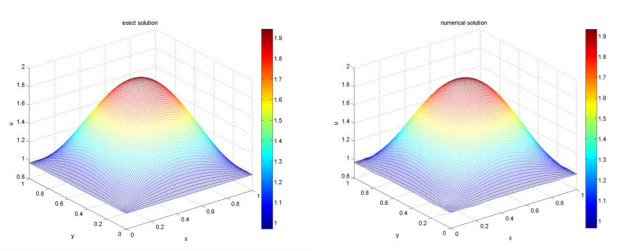
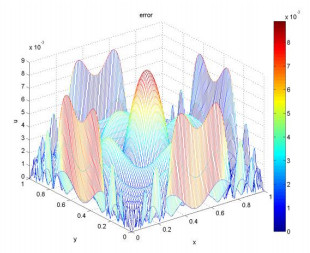
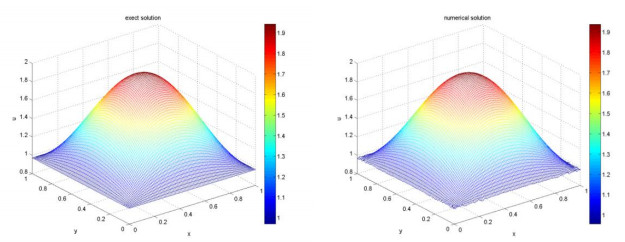
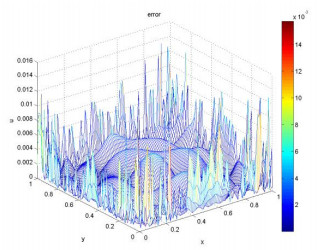
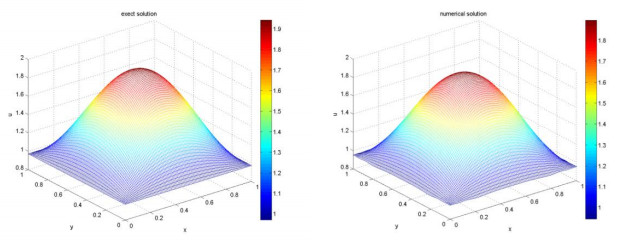
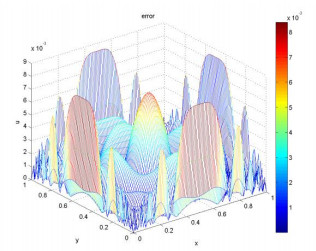
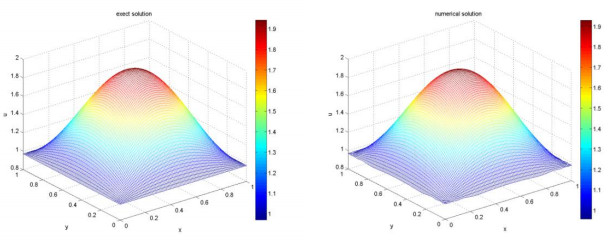
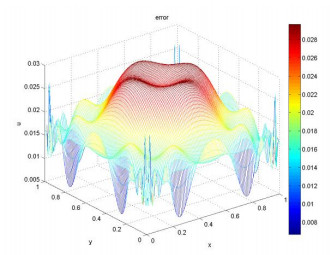


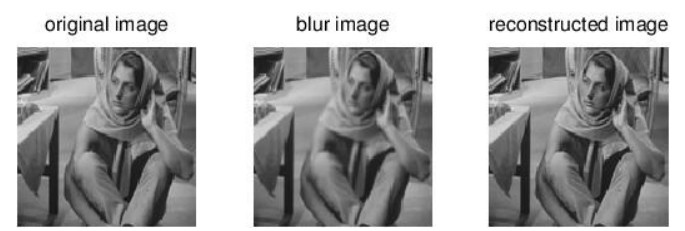



 DownLoad:
DownLoad: